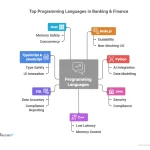
Forex trading involves buying and selling currency pairs for profit. Successful traders need the appropriate mindset and strategies in place to protect their capital when engaging in forex trading.
Considered when trading are two risks: market and leverage risk. Price fluctuations influenced by economic, geopolitical and global issues can reduce your investment value; trading with leverage increases exposure.
Technical Analysis
Technical analysis is an increasingly popular approach among traders and investors, as it involves using past market data – in particular price and trading volume – to identify patterns and predict future movements. Technical analysis can be an invaluable asset in helping traders avoid losing money by ensuring they take fewer risks on each trade than they stand to gain from it.
Market analysis tools can also identify key levels of support and resistance in the market – areas where prices have historically reversed or consolidate – that traders can use to anticipate possible reversals or pinpoint entry points for trades. In addition, technical tools may also give an indicator of overall investor optimism or pessimism.
Forex trading can be an appealing form of investing, yet for beginners it can be risky and complicated. Leverage poses the greatest threat and should only be used with caution; to protect capital it’s crucial that risk management strategies be employed when trading forex.
Fundamental Analysis
Fundamental analysis provides traders with insight into the forces driving currency prices, helping them identify profitable trading opportunities and capitalize on favorable market conditions. Fundamental analysis falls into two categories: top-down and bottom-up analysis. Top-down involves looking at macroeconomic factors like interest rates, debt levels, employment trends and inflation reports to find patterns and profit from trades while bottom-up uses both technical and fundamental indicators to determine an asset’s fair value.
Fundamental analysis can help traders infuse fundamental analysis into their trading strategy by keeping up-to-date on news events and economic releases, which allows them to make informed decisions while minimising risks to investment capital. It is also vitally important for traders to establish their risk tolerance before trading beyond their comfort zone; this will prevent unwise decisions due to emotions like excitement, greed or fear from leading them down an unwise path.
Diversification
There’s no such thing as a risk-free financial market, and capital preservation should always be the main focus for every trader. This involves minimizing exposure to market volatility while making sure your portfolio aligns with your financial goals.
One way of doing this is to diversify your investments and trading instruments to reduce market risk and potential for large losses from leveraged trading.
Staying abreast of news events and economic indicators can also help mitigate risk. Announcements like this one could trigger unexpected price movements; being informed can protect you from losing any hard-earned savings.
Compare Your Trading Performance To Relevant Benchmarks And Indices To Evaluate Success It is also helpful to compare your trading performance against relevant benchmarks and indices as a means of measuring success. Doing this can help identify any improvements and enhance decision-making process; techniques like setting realistic profit expectations, creating a trading plan and avoiding impulsive trading can all help to prevent unnecessary losses from occuring.
Position Sizing
Position sizing is a technique employed in forex trading that determines how much of an account should be staked on each trade, an essential aspect of effective risk management in the trading arena.
Position sizing encourages consistency in trading by matching trade size with risk tolerance and account size, creating long-term sustainability. Position sizing also enhances decision-making by decreasing impulsive trading which often results in losses.
Risk tolerance levels are one of the key determinants in establishing position sizes, with traders’ willingness to risk as defined as a percentage of their total account on each trade being defined as risk tolerance levels. It’s important to avoid setting risk tolerance levels too low as this may reduce profits; to achieve optimal risk per trade use a combination of account risk and cents at risk to determine desired risk per trade and adjust position sizes according to market volatility so as to prevent overexposure of your account.





